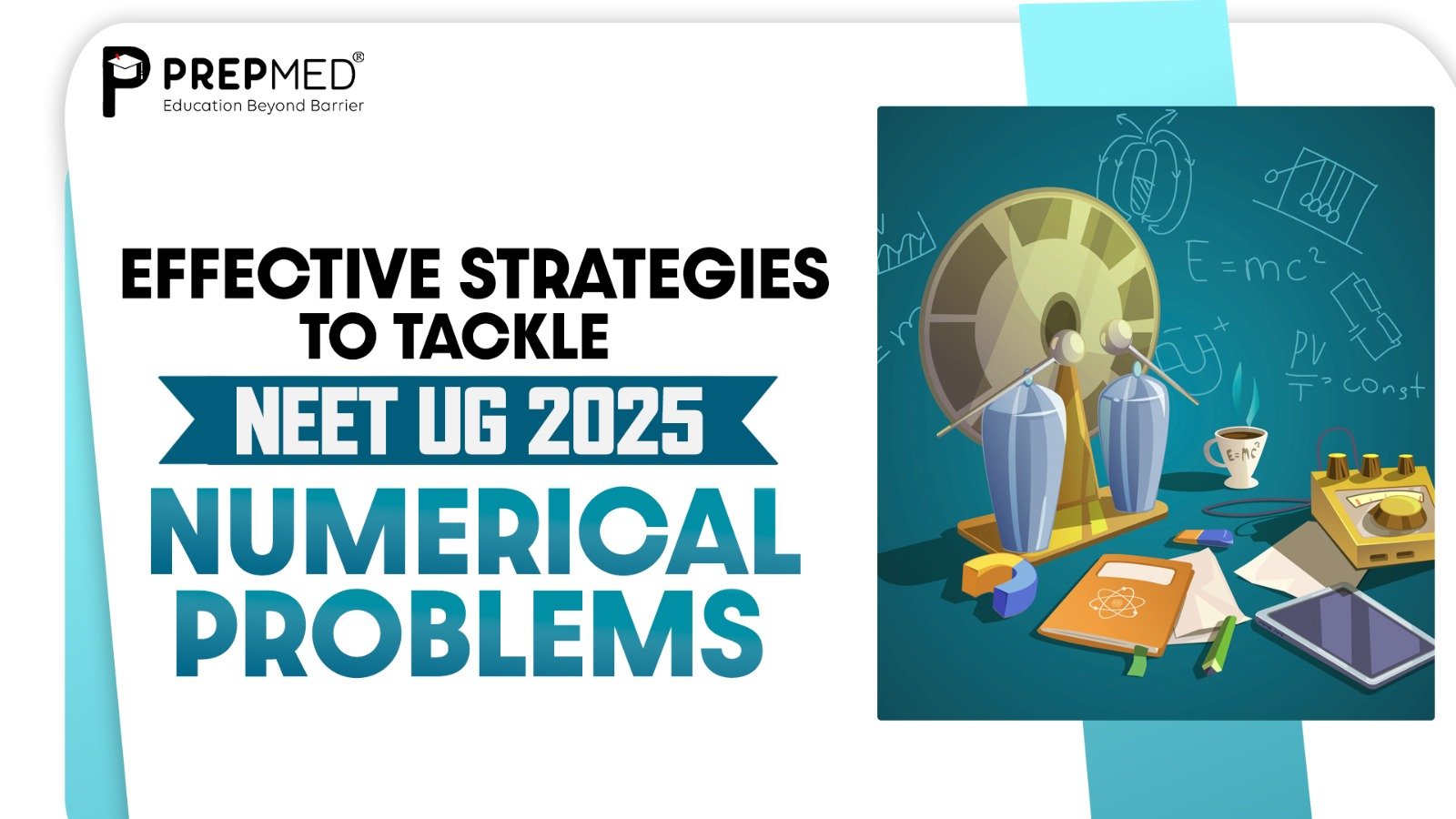April 20, 2025
Effective Strategies to Tackle NEET-UG 2025 Numerical Problems
NEET (National Eligibility Cum Entrance Test) is a national-level undergraduate medical entrance examination for candidates who want to pursue medical education in the top medical colleges of India. The National Testing Agency (NTA) conducts the exam to determine the knowledge and understanding of the aspirants on the core subjects like Physics, Chemistry, and Biology. The exam contains every topic from CBSE grades 11th and 12th, but tests conceptual knowledge of theoretical topics while simultaneously including numerical problems that require deep understanding along with advanced problem-solving capabilities.
The core subjects required for NEET exam preparation are physics, chemistry, and biology, and this is the reason why the majority of the NEET aspirants neglect mathematics, as it is one of the difficult subjects to learn. The relationship between maths and physics is strong also several concepts of chemistry also require mathematical principles.
A solid understanding of basic mathematical concepts is crucial for applicants who aim to obtain good NEET scores or ranks. NEET aspirants typically get scared while solving numerical problems. We will provide targeted tips and strategies to help the students in handling the numerical problems of NEET-UG 2025, as the exam date is already around the corner.
Tips and Strategies to Solve Numerical Problems of NEET 2025:
1. Understand the concepts:
Understanding fundamental concepts is the essential step before beginning to solve numerical problems. The numerical problems designed by the examiners aim to evaluate students' grasp of fundamental concepts, but solving these problems becomes impossible when students don't fully understand the underlying principles and concepts. Begin with the basic understanding of theory, followed by solving easier and simpler problems before moving on to more advanced questions.
2. Read the question carefully:
Every student needs to read the whole question to fully understand what is being asked. Mark down important numbers and phrases directly on the question, then note down the units used. Make sure you understand the problem correctly before starting to solve it, because incorrect interpretations can cause mistakes. The first step includes both understanding and analyzing the full question as well as evaluating all answer choices. The next step involves selecting which concept or equation to use to solve the problem.
3. Jot down the given data:
The solution becomes much easier when you identify which concept or formula/equation needs to be applied to the problem. At first, try to jot down the data provided in the question, and then identify what needs to be calculated. When you read the question carefully and collect all the given data, by making some rough calculations, you can select the correct answer from the provided options.
4. Break the problem:
Long and complex numerical problems create significant difficulty for students. To solve complex problems, break down the numerical problem into smaller parts and then solve each part independently. After individually solving all sections, you can join the solutions to arrive at the final result.
5. Use diagrams:
Drawing diagrams can help you in visualizing the problem and enable a better understanding of problem. You can solve problems more easily by drawing diagrams since this process helps you identify the main concepts along with their applications. Drawing a free-body diagram in physics problems enables you to determine the forces acting on an object during calculations.
6. Check the units:
Units play a crucial role while solving numerical problems, and make sure that all the units are the same throughout the numerical problem. Sometimes a question might be asked to measure how quickly a student can identify and respond with their presence of mind. Recognizing the proper SI units enables you to discard invalid choices while identifying the correct answers. Apply standard units to each value, then perform any necessary unit conversions in your calculations. The final answer must contain the correct units.
7. Learn shortcuts:
Solving numerical problems requires an efficient time-management approach that can be achieved by learning shortcuts. Shortcuts for problem-solving include techniques such as using formulae, logarithms, and approximation strategies. Learning these simpler shortcut methods allows you to solve problems quickly while also improving your efficiency.
8. Use elimination technique:
Competitive exams like NEET-UG feature multiple-choice questions that provide students with four answer choices with one correct answer. Instead of solving the whole numerical problem, you can perform some quick calculations with values and digits to rule out incorrect answer options. This technique stands out as the most beneficial method for NEET-UG exams and can be mastered through regular practice.
9. Check your answer:
Verify your answer after solving the problem to make sure the solution is accurate. Double-check your calculations along with checking the units that you have applied. Try solving the problem using additional methods to verify your solution if you have sufficient time.
10. Practice:
Success in NEET-UG 2025 heavily depends on dedicated and consistent practice. Use a combination of previous years' question papers along with sample papers and reference books, and online resources to solve various types of problems. Focus on understanding the logic behind every solution while solving problems instead of memorizing the individual steps.







